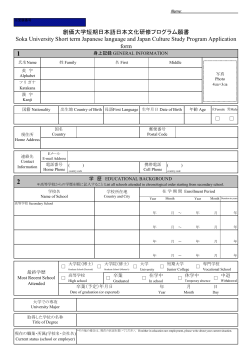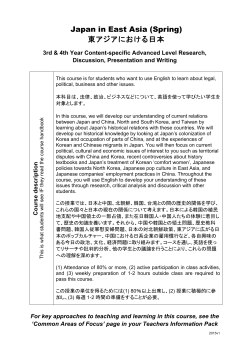
fact sheet - Lake Whatcom Management Program
Getting Garden-Variety Weeds Out of Your Garden Bittercress Cardamine oligosperma This annual, sometimes called pepper cress or spring cress, sprouts up in yards and gardens in the winter, when many other weeds are down for the count. While not terribly difficult to pull up, bittercress uses this to its advantage: its seedpods explode upon touch. Bittercress has many small, round leaves with lobes that branch from a single shallow taproot, and small white flowers at the tips of a central stalk. The plants are usually less than a foot tall. Management Bittercress has a very shallow root system and is easy to pull out. Try to get them out before they flower. Common Horsetail Equisetum arvense This ancient plant originated 300 million years ago, and has outlived many other species, so its not surprising that its hard to get rid of. It is quite fertile; each plant can release thousands of spores every spring. Horsetail has a high silica content, and was once used to scour pots and pans. Average height is 618 inches. Management Removing horsetail is difficult because it breaks apart very easily, and any small piece of the root system left in the soil will regenerate. Some possible methods: u Improve drainage. Dry up any underground source of moisture that might u u u u be supplying the horsetail, as its particularly fond of moist soil. Encourage desirable plants and out-compete the horsetail. Consider installing landscape fabrics or weed mats. Cut or burn off the fertile stems prior to spore formulation. Consistently remove the vegetative growth so it cant produce food for the roots. Chemical choices for horsetail management are limited. If you use herbicides, target the horsetails weakest link the fertile, branch-less stage (usually mid- to late March in the Pacific Northwest). Plan to make two or three sequential applications each season until the horsetail is gone. Whatcom County Public Works - Spring 2004 (360) 354-3990 Dandelion Taraxacum officinale This common weed can live just about anywhere. Management Since its lightweight seeds are easily dispersed, preventing dandelion infestations is best done by removing the flower before it goes to seed. (Note that the flower can still develop seeds after its detached from the plant, so dont just leave dandelion heads lying around your yard.) For long-term solutions, digging up the plant can be an effective control. Be sure to get the entire taprootit can penetrate as deep as 10 or 15 feet, but is more usually 6-18 inches long. You might need to dig the same plant up several times before you exhaust the nutrients stored in its root system. Landscape fabrics or mulch (at least three inches deep) may also be effective. Broad-scale applications of herbicides are fairly effective with dandelion seedlings, but dont put much of a dent in established plants. For spot treatments, glyphosate is effective. Field Bindweed Convolvulus arvensis The deceptively delicate prettiness of this Eurasian native, also called perennial morning glory, belies its invasiveness and persistence. First documented in San Diego, California in 1884, within 40 years field bindweed was proclaimed the worst weed in many western states. Bindweed spreads through an extensive and deep (up to 20 feet below the surface, in some cases) root network, as well as through seeds produced from its white or pink trumpetshaped flowers. It is a vine that climbs if it has a structure or another plant for support, prostrate (lying flat on the ground) if not. A single plant may spread over 30 square feet in just one growing season. Management Once bindweed invades, it is very difficult to control. Root fragments as small as 2 can become new plants, and its seeds can remain viable for up to 60 years. Herbicides may suppress bindweed, but wont totally wipe it out. Prevention is the best solution: yank up seedlings before they get established (which happens 3-4 weeks after germination) and keep plants from producing any seed. If its too late for prevention, be prepared for regular work over a few years. Try shading out bindweed (which may take more than 3 years), hoeing every 2-3 weeks, mowing frequently, and/or using a combination of pre-emergent and foliar herbicides. Himalayan Blackberry Rubus discolor (formerly R. procerus) The Himalayan blackberry is very aggressive, crowding out all other plants and spreading through seeds, underground runners, and even from where its canes touch the ground. The Himalayan blackberry can be distinguished from its native cousins by its leaves, which have white undersides, and its intimidating array of thorns (native berries are not quite as ferocious in their defenses). Even its leaves have thorns. Management Getting rid of the Himalayan blackberry is a long-term commitment. Uproot seedlings as soon as you see them. For older plants, constant cut-back of any aboveground growth will eventually starve their root systems, although this may take a few years. As with other wildly successful weeds, new plants can sprout from small pieces of roots or canes, so be sure to remove as much of the plant as you can. Although a single tilling will merely break up the root system and help the plant spread faster, constant tilling can prevent new plants from becoming firmly established. Japanese Knotweed Polygonum cuspidatum This tall, upright perennial spreads rapidly by rhizome (underground runners) to form dense thickets that smother other plants. It is a particular problem along the Nooksack River; floodwaters can break off pieces of Japanese knotweed and carry them downstream to newly scoured streambanks, where the pieces can sprout into new plants. As with other knotweeds, Japanese knotweed can be distinguished by the knot-like swelling where the leaf meets the stem. This upright perennial can grow to over 10 feet in height. The leaves are broadly oval with pointed tips, and are usually about 6 inches long by 3 to 4 inches wide. A juvenile Japanese knotweed. Japanese knotweed is designated as a noxious weed in Washington State. Management For small patches, digging up Japanese knotweed will work if you remove the entire plant, including all roots and runners. It may be possible to hand-pull young plants. NEVER compost the plants or deposit in any water bodies. Bag and seal up the knotweed and dispose of it in the garbage. For larger areas, try using a combined method of cutting and herbicide A stand of mature plants. Atreatment. Cut the plants to ground level in May or June. Allow them to regrow to about waist height (about 8 -10 weeks). Apply glyphosate at a 2.5 - 3% solution rate to foliage. Do not use a higher percentage of solution as this will be ineffective, burning the plants back before the herbicide has a chance to reach the roots. Remember to always read and follow the directions on the label with mixing and applying pesticides.
© Copyright 2025









